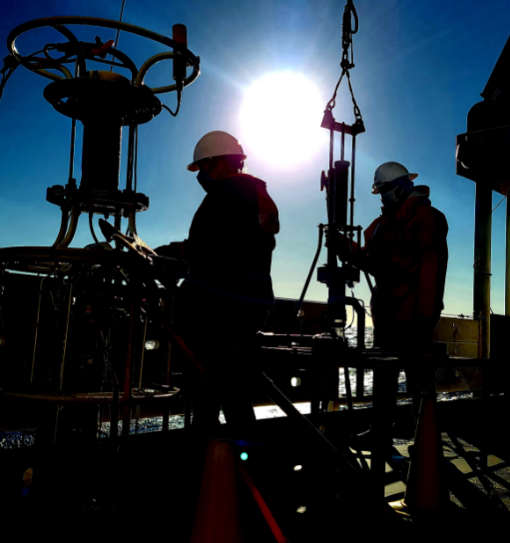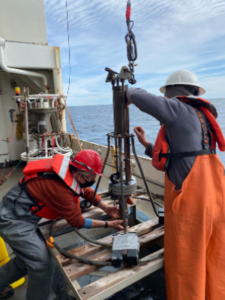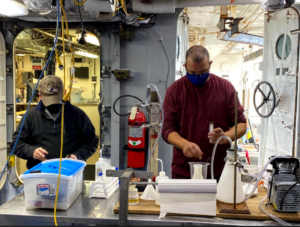
NCCOS scientists and their partners recently completed the annual Gulf of Maine cyst sampling cruise aboard NOAA Ship Henry B. Bigelow (October 8–16, 2020). The research cruise is conducted each fall to measure Alexandrium catenella cyst abundance in seafloor sediment samples, data that are used to inform the following spring’s red tide forecast for the Gulf of Maine. The nine-day cruise adhered to COVID-19 prevention protocols.
Alexandrium catenella is a dinoflagellate species that survives the cold winter months by forming dormant seed-like cysts that accumulate in the region’s ocean sediments each autumn. When water temperatures warm in the spring, the cysts germinate into flagellated adults that repopulate the water column and are transported to new areas by ocean currents. Blooms of Alexandrium catenella produce toxins that can cause paralytic shellfish poisoning in people who consume tainted shellfish. The annual red tide forecast enables proactive responses to protect public health and coastal economies.
In partnership with researchers from the Woods Hole Oceanographic Institution (WHOI), NCCOS scientists collected sediment samples and conductivity, temperature, and depth (CTD) data along an array of 53 stations throughout the Gulf of Maine between Cape Cod and the U.S.–Canadian border.

The team processed the sediment samples on board the ship to collect the cysts. The cysts in each sample will then be counted under a microscope at the NCCOS Beaufort Laboratory in Beaufort, North Carolina. A map of the distribution and abundance of cysts will be used in a model along with physical parameters collected via CTD casts at each station and in-season meteorological data to produce the harmful algal bloom forecast model for the Gulf of Maine spring 2021 forecast. Subsamples taken from the same cores of sediment will also be used to investigate molecular methods that may replace visual counting of cysts and speed up the cyst quantification process.
To successfully and safely undertake the cruise, the researchers observed strict COVID-19 anti-viral transmission protocols. These included a pre-cruise staff quarantine, pre-cruise COVID testing, a reduced scientific staff, mask wearing, single occupancy berths, no eating or congregating on the mess deck or lounges, social distancing as much as possible, no dockside mooring, and passenger embarking and debarking by small boat.

